21 A class consists of 10 males and 30 females If one studen
21. A class consists of 10 males and 30 females. If one student is randomly selected from the class, what is the probability of selecting a male?
a.
10/30
b.
10/40
c.
1/10
d.
1/40
22. Which of the following accurately describes the proportions in the tails of a normal distribution?
a.
Proportions in the right-hand tail are greater than 0.50, and proportions in the left-hand tail are less than 0.50.
b.
Proportions in the right-hand tail are less than 0.50, and proportions in the left-hand tail are greater than 0.50.
c.
Proportions in both tails are less than 0.50.
d.
Proportions in both tails are greater than 0.50.
23. What proportion of a normal distribution is located between z = –1.50 and z = +1.50?
a.
0.9332
b.
0.0668
c.
0.4332
d.
0.8664
24. IQ scores form a normal distribution with µ = 100 and = 15. Individuals with IQs between 90 and110 are classified as average. What proportion of the population is average?
a.
0.7486
b.
0.5028
c.
0.4972
d.
0.2486
Chapter 7
25. A sample of n = 4 scores is selected from a population with = 40 with = 8, and the sample mean is M = 43. What is the standard error for the sample mean?
a.
8
b.
4
c.
3
d.
2
26. Under what circumstances will the distribution of sample means be normal?
a.
It is always normal
b.
Only if the population distribution is normal
c.
Only if the sample size is greater than 30
d.
If the population is normal or if the sample size is greater than 30
27. A sample is obtained from a population with = 100 and = 20. Which of the following samples would produce the most extreme z-score?
a.
A sample of n = 25 scores with M = 102
b.
A sample of n = 100 scores with M = 102
c.
A sample of n = 25 scores with M = 104
d.
A sample of n = 100 scores with M = 104
28. What happens to the standard error of M as sample size increases?
a.
It increases.
b.
It decreases.
c.
It stays constant.
d.
The standard error does not change in a predictable manner when sample size increases.
Chapter 8
29. A hypothesis test involves a comparison of which two elements?
a.
Research results from a sample and a hypothesis about a population
b.
Research results from a population and a hypothesis about a sample
c.
Research results from a population and a hypothesis about the population
d.
Research results from a sample and a hypothesis about the sample
30. A researcher selects a sample and administers a treatment to the individuals in the sample. If the sample is used for a hypothesis test, what does the alternative hypothesis (H1) say about the treatment?
a.
The treatment causes a change in the scores.
b.
The treatment adds a constant to each score.
c.
The treatment multiplies each score by a constant.
d.
The treatment has no effect on the scores.
31. What is the relationship between the alpha level, the size of the critical region, and the risk of a Type I error?
a.
As the alpha level increases, the size of the critical region increases, and the risk of a Type I error increases.
b.
As the alpha level increases, the size of the critical region increases, and the risk of a Type I error decreases.
c.
As the alpha level increases, the size of the critical region decreases, and the risk of a Type I error increases.
d.
As the alpha level increases, the size of the critical region decreases, and the risk of a Type I error decreases.
32. A two-tailed hypothesis test is being used to evaluate a treatment effect with = .05. If the sample data produce a z-score of z = 2.24, what is the correct decision?
a.
Reject the null hypothesis and conclude that the treatment has no effect
b.
Reject the null hypothesis and conclude that the treatment has an effect
c.
Fail to reject the null hypothesis and conclude that the treatment has no effect
d.
Fail to reject the null hypothesis and conclude that the treatment has an effect
Chapter 9
33. Which of the following is a fundamental difference between the t statistic and a z-score?
a.
The t statistic uses the sample mean in place of the population mean.
b.
The t statistic uses the sample variance in place of the population variance.
c.
The t statistic computes the standard error by dividing the standard deviation by n - 1 instead of dividing by n.
d.
All of these are differences between t and z.
34. Which set of characteristics will produce the smallest value for the estimated standard error?
a.
A large sample size and a small sample variance
b.
A large sample size and a large sample variance
c.
A small sample size and a small sample variance
d.
A small sample size and a large sample variance
35. A researcher is using a two-tailed hypothesis test with = .05 to evaluate the effect of a treatment. If the boundaries for the critical region are t = ± 2.080, then how many individuals are in the sample?
a.
n = 22
b.
n = 21
c.
n = 20
d.
Impossible to determine without more information
36. Two samples from the same population both have M = 84 and s2 = 20, but one sample has n = 10 and the other has n = 20 scores. Both samples are used to evaluate a hypothesis stating that = 80 and to compute Cohen’s d. How will the outcomes for the two samples compare?
a.
The larger sample is more likely to reject the hypothesis and will produce a larger value for Cohen’s d.
b.
The larger sample is more likely to reject the hypothesis, but the two samples will have the same value for Cohen’s d.
c.
The larger sample is less likely to reject the hypothesis and will produce a larger value for Cohen’s d.
d.
The larger sample is less likely to reject the hypothesis, but the two samples will have the same value for Cohen’s d.
Chapter 10
37. An independent-measures research study uses a total of 40 participants to compare two treatment conditions. What is the df value for the t statistic for this study?
a.
18
b.
19
c.
38
d.
39
38. What is the pooled variance for the following two samples?
a.
7 Sample 1: n = 8 and SS = 168
b.
7 Sample 2: n = 6 and SS = 120
c.
20.57
d.
24
39. Two samples each have n = 4 scores. If the first sample has a variance of 10 and the second sample has a variance of 6, what is the estimated standard error for the sample mean difference?
a.
1
b.
2
c.
4
d.
Cannot determine without more information
40. Two separate samples are being used to estimate the population mean difference between two treatment conditions. Which of the following would produce the widest confidence interval?
a.
n1 = n2 = 10 with a pooled variance of 10
b.
n1 = n2 = 10 with a pooled variance of 100
c.
n1 = n2 = 20 with a pooled variance of 10
d.
n1 = n2 = 20 with a pooled variance of 100
| a. | 10/30 | ||
| b. | 10/40 | ||
| c. | 1/10 | ||
| d. | 1/40 |
Solution
Q Ans Reason 21 1/4 Favourable/Total = 10/40 22 b. Proportions in the right-hand tail are less than 0.50, and proportions in the left-hand tail are greater than 0.50. 23 d. 0.8664 24 P(90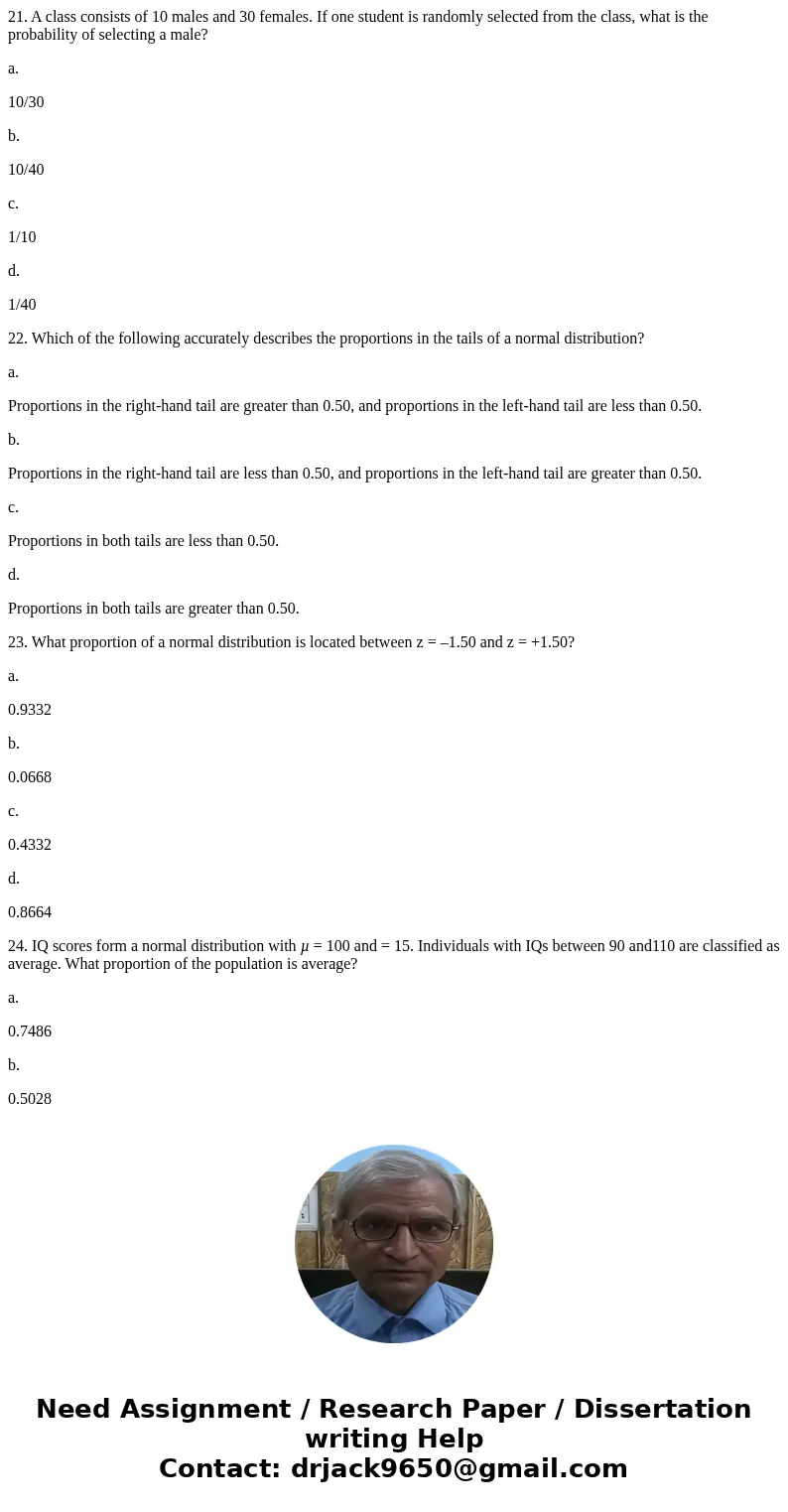
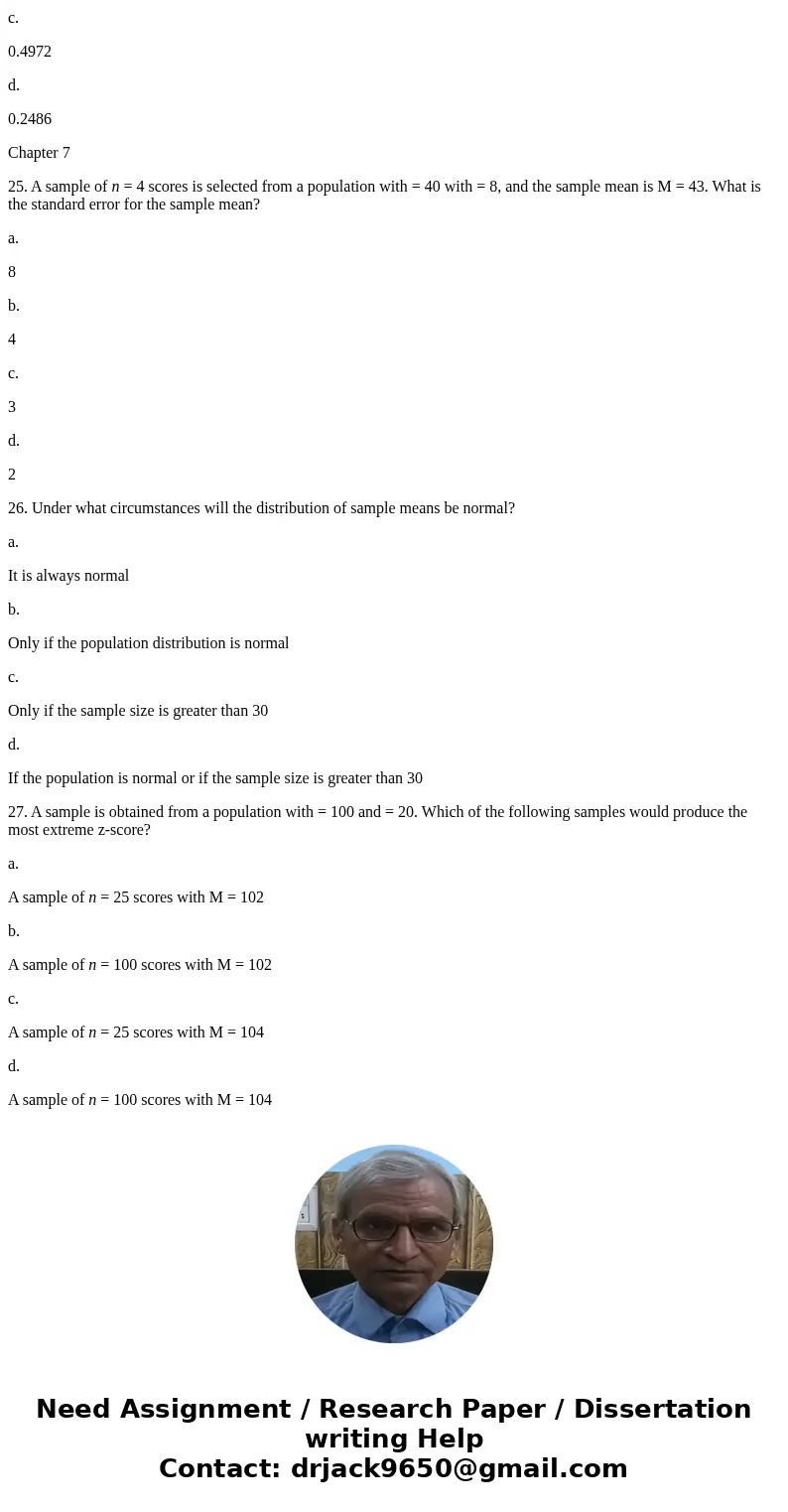
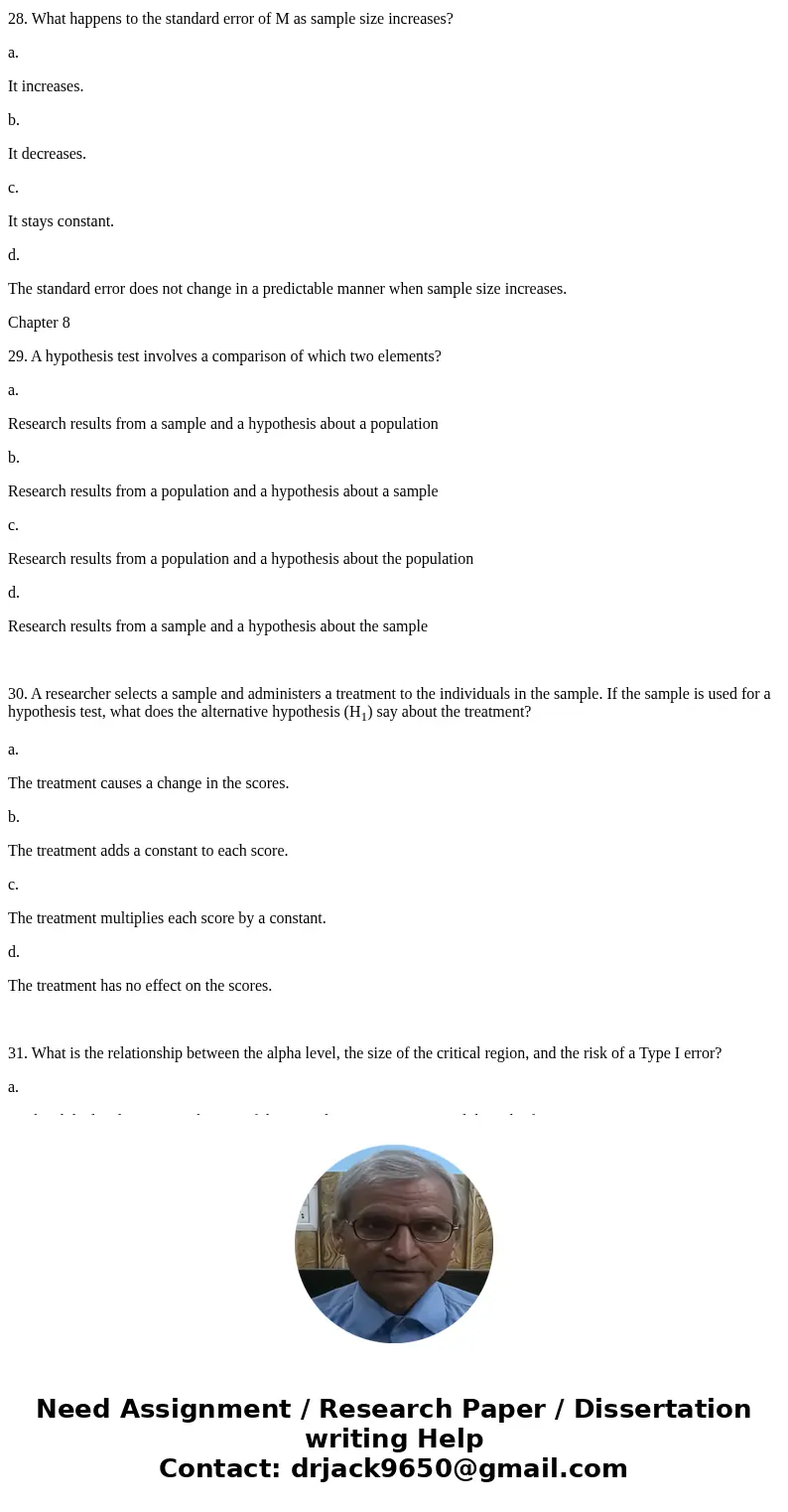
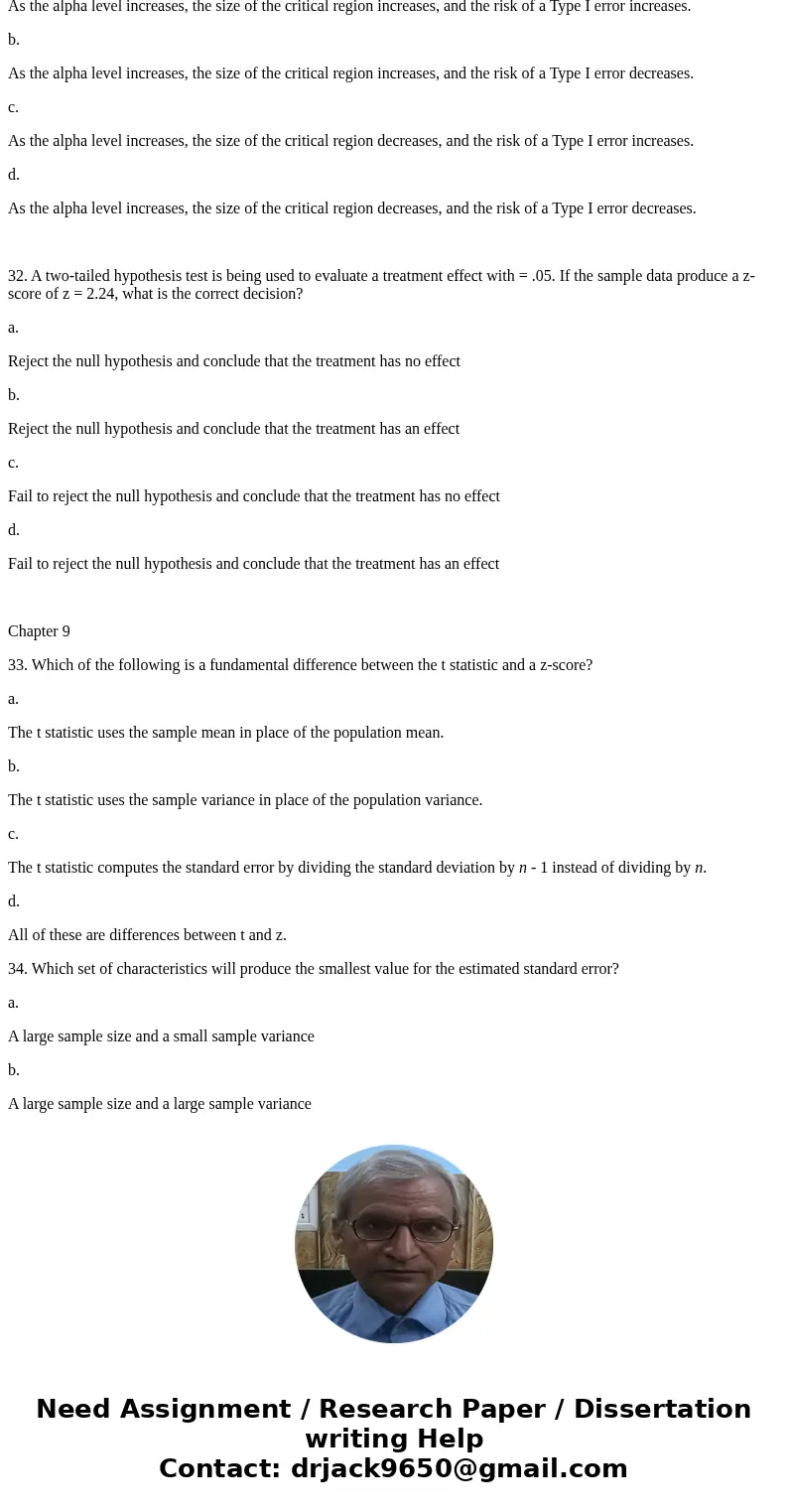
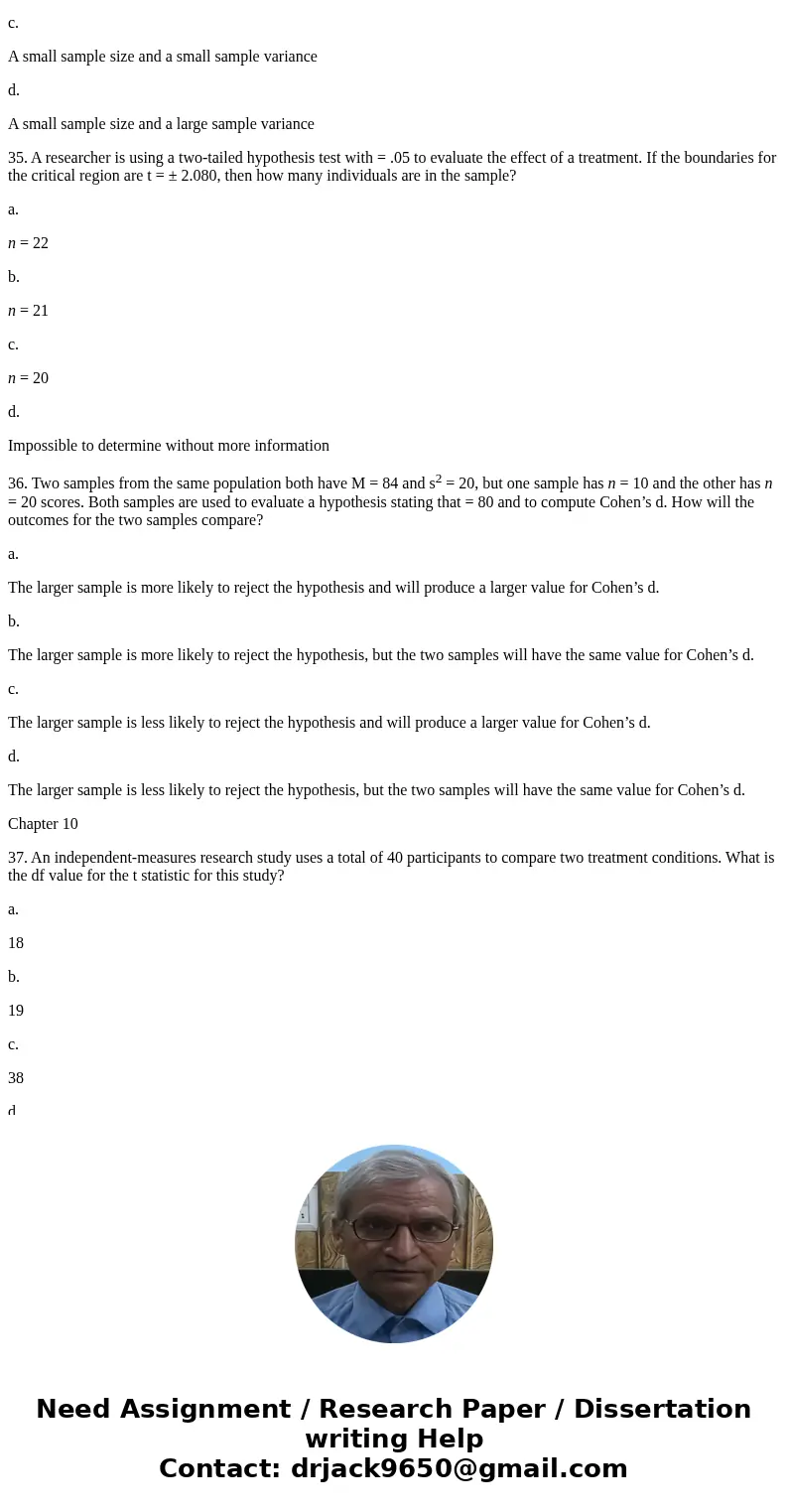
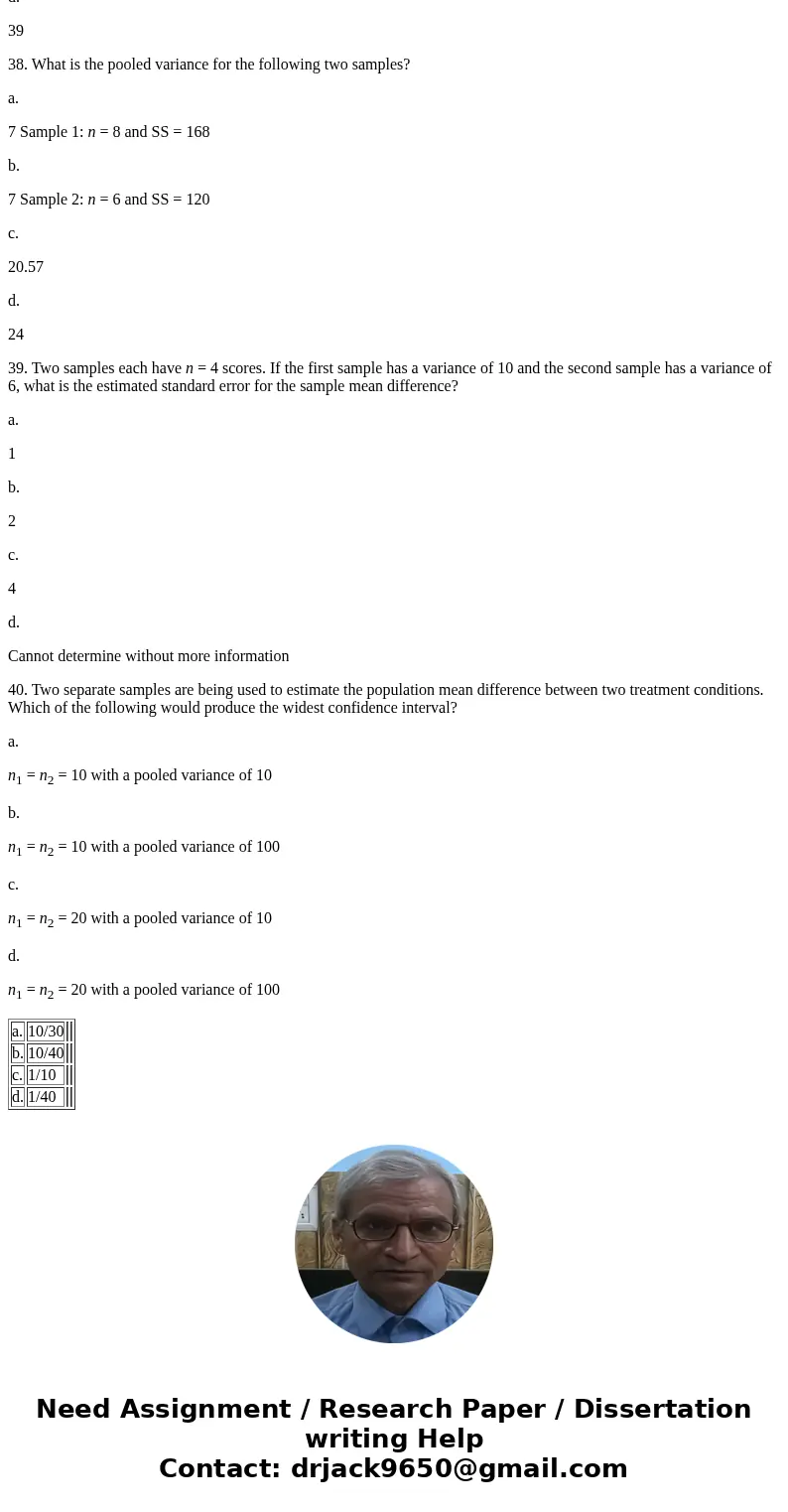
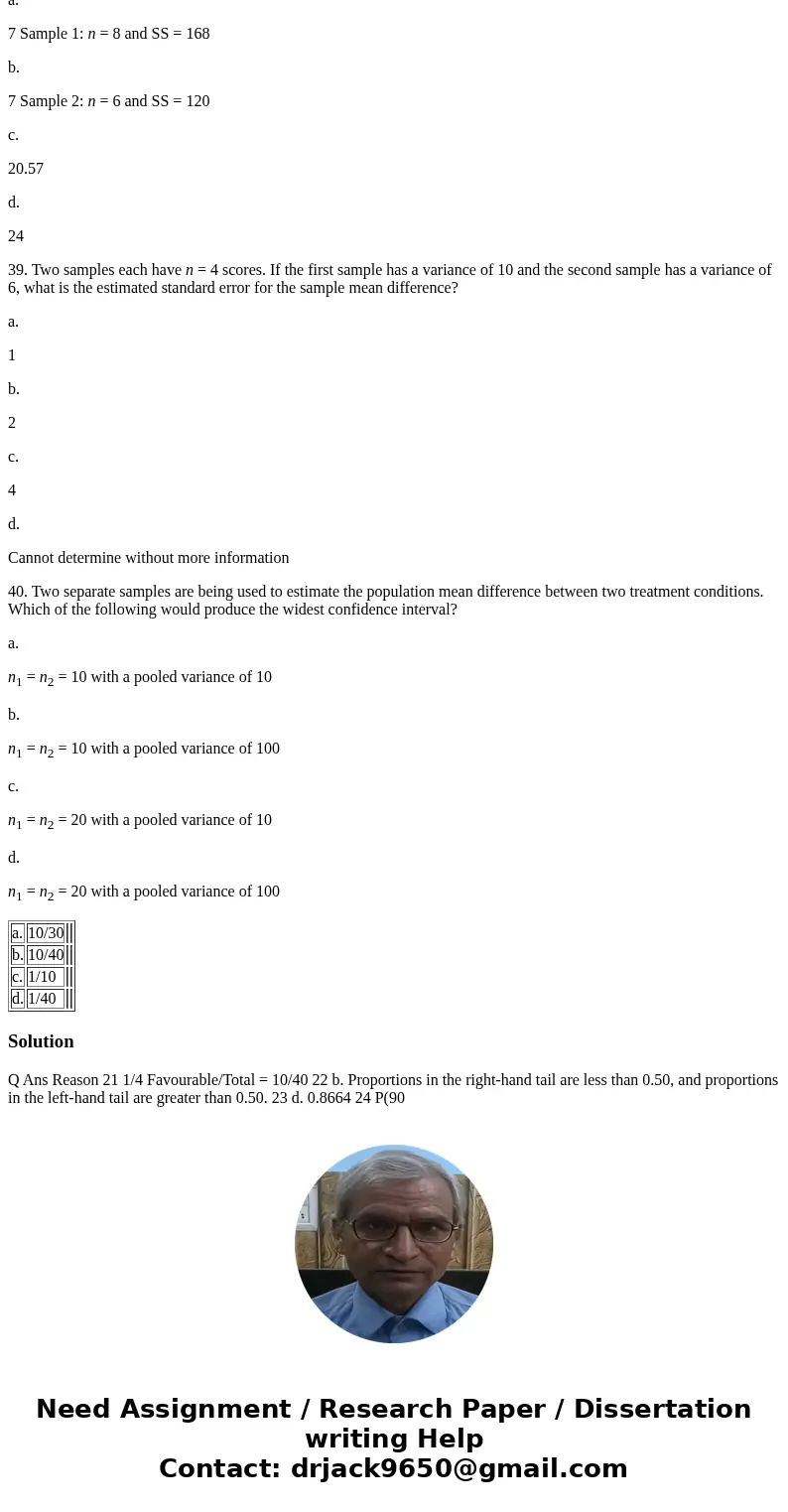
 Homework Sourse
Homework Sourse